Contractor ISRO | Launch date December 2018 | |
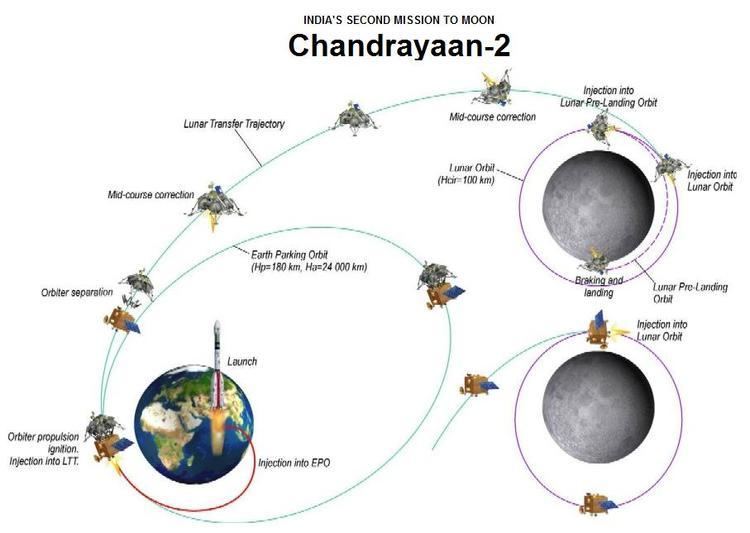 | ||
Operator Indian Space Research Organisation Mission duration Orbiter: 1 yearLander: 14-15 daysRover: 14-15 days Launch mass Combined: 3,250 kg (7,170 lb) Rocket Geosynchronous Satellite Launch Vehicle Manufacturer Indian Space Research Organisation Similar Chandrayaan‑1, Aditya, SELENE‑2, Moon Impact Pr, Hiten | ||
Chandrayaan-2 (Sanskrit: चन्द्रयान-२; [ t͡ʃʌnd̪ɾʌːjaːn d̪ʋi]; lit: Moon-vehicle pronunciation ) is India's second lunar exploration mission after Chandrayaan-1. Developed by the Indian Space Research Organisation (ISRO), the mission is planned to be launched to the Moon by a Geosynchronous Satellite Launch Vehicle (GSLV Mk II). It includes a lunar orbiter, lander and rover, all developed by India. The ISRO is planning to launch Chandrayaan-2 in the first quarter of 2018.
Contents
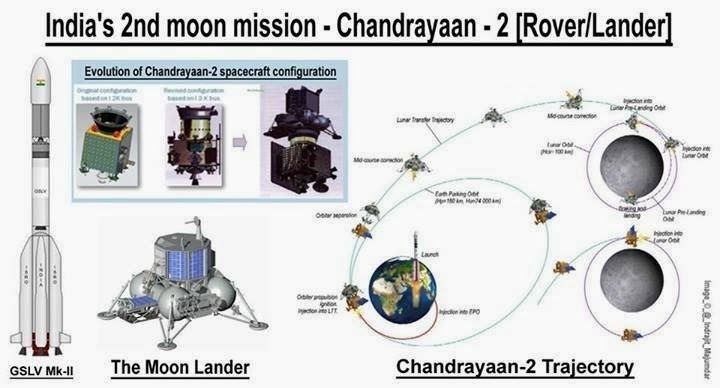
According to ISRO, this mission will use and test various new technologies and conduct new experiments. The wheeled rover will move on the lunar surface and will pick up soil or rock samples for on-site chemical analysis. The data will be relayed to Earth through the Chandrayaan-2 orbiter.
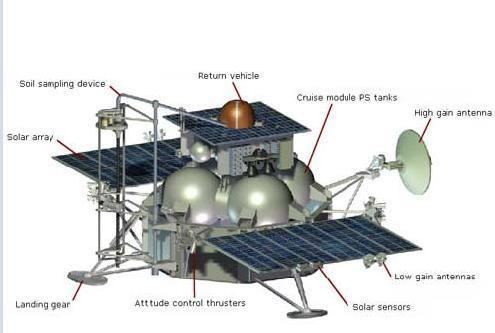
History

On 12 November 2007, representatives of the Russian Federal Space Agency (Roscosmos) and ISRO signed an agreement for the two agencies to work together on the Chandrayaan-2 project. ISRO would have the prime responsibility for the orbiter and rover, while Roscosmos was to provide the lander.
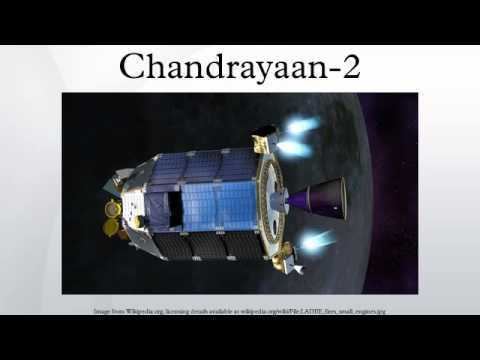
The Indian government approved the mission in a meeting of the Union Cabinet, held on 18 September 2008 and chaired by Prime Minister Manmohan Singh. The design of the spacecraft was completed in August 2009, with scientists of both countries conducting a joint review.
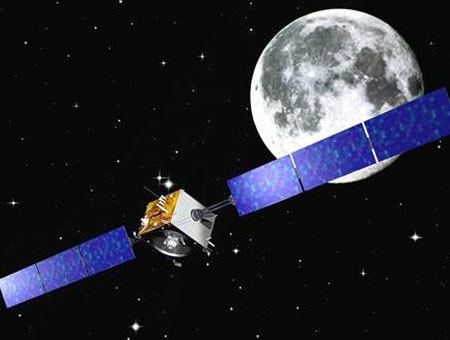
Although ISRO finalized the payload for Chandrayaan-2 per schedule, the mission was postponed in January 2013 and rescheduled to 2016 because Russia was unable to develop the lander on time. Roscosmos later withdrew in wake of the failure of the Fobos-Grunt mission to Mars, the reason being that technical aspects connected with the Fobos-Grunt mission were also used in the lunar projects, which need to be reviewed. When Russia cited its inability to provide the lander even by 2015, India decided to develop the lunar mission independently.
Design
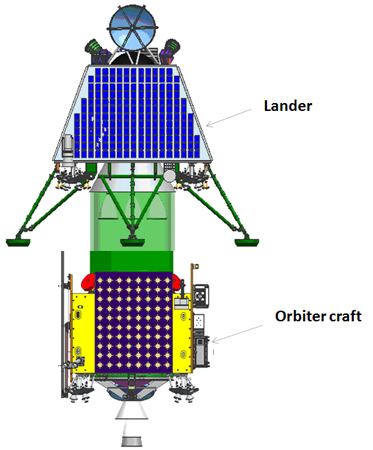
The mission is planned to fly on a Geosynchronous Satellite Launch Vehicle (GSLV Mk II) with an approximate lift-off mass of 3,250 kg (7,170 lb) from Satish Dhawan Space Centre on Sriharikota Island. As of December 2015, the mission has an allocated cost of ₹603 Crore (US$91 million).
Orbiter
The orbiter will orbit the Moon at an altitude of 100 km (62 mi). The mission would carry five instruments on the orbiter. Three of them are new, while two others are improved versions of those flown on Chandrayaan-1. The approximate launch mass will be 1,400 kg (3,100 lb). The Orbiter High Resolution Camera (OHRC) will conduct high-resolution observations of the landing site prior to separation of the lander from the orbiter. Interfaces between the orbiter and its GSLV Mk II launch vehicle have been finalised.
Lander
Unlike Chandrayaan-1's Moon Impact Probe, which impacted the Moon's surface, the lander will make a soft landing to then deploy the rover. The lander will not perform any scientific activities. The approximate mass of the lander and rover is 1,250 kg (2,760 lb). Initially, the lander was slated to be developed by Russia in collaboration with India. When Russia stated its inability provide the lander to meet even the revised time frame of 2015, Indian officials decided to develop the lander independently. The cancellation of the Russian lander also meant that mission profile had to be changed. The preliminary configuration study of the indigenous lander was completed in 2013 by the Space Applications Centre (SAC) in Ahmedabad.
The research team identified methods for a soft landing on the lunar surface, as well as the associated technologies that would be needed for such an event. Amongst these technologies are a high resolution camera, navigation camera, hazard avoidance camera, an 800 N (180 lbf) throttleable liquid main engine and attitude thrusters, altimeter, velocity meter, accelerometer, and the software needed to run these components. The lander's main engine has successfully undergone a high altitude test for a duration of 513 seconds, and closed loop verification tests of the sensors, actuators and software are planned for the middle of 2016. Engineering models of the lander began undergoing ground and aerial tests in late October 2016, in Challakere in the Chitradurga district of Karnataka. The ISRO created roughly 10 craters in the surface to help assess the ability of the lander's sensors to select a landing site.
Rover
The rover's mass will be about 20 kg (44 lb) and will operate on solar power. The rover will move on wheels on the lunar surface, pick up samples of soil or rocks, perform on-site chemical analysis and send the data to the orbiter above, which will relay it to the Earth station.
The initial plan was for the rover to be designed in Russia and fabricated in India. However, Russia gave up in May 2010 on its plan on designing the rover. Subsequently, ISRO decided on designing and fabricating the rover. IIT Kanpur is developing three subsystems to provide mobility:
- Stereoscopic camera-based 3D vision - will provide the ground team controlling the rovers a 3D view of the surrounding terrain.
- Kinematic traction control - will enable the rover to negotiate the rough lunar terrain using independent steering provided on four of its wheels.
- Control and motor dynamics - The rover will have six wheels, each driven by an independent electric motor. Four of the wheels will also be capable of independent steering. A total of 10 electric motors will be used for traction and steering.
Payload
ISRO has announced that an expert committee has decided on five payloads for the orbiter, and two for the rover. While it was initially reported that NASA and ESA would participate in the mission by providing some scientific instruments for the orbiter, ISRO has later clarified that due to weight restrictions it will not be carrying foreign payloads on this mission.
